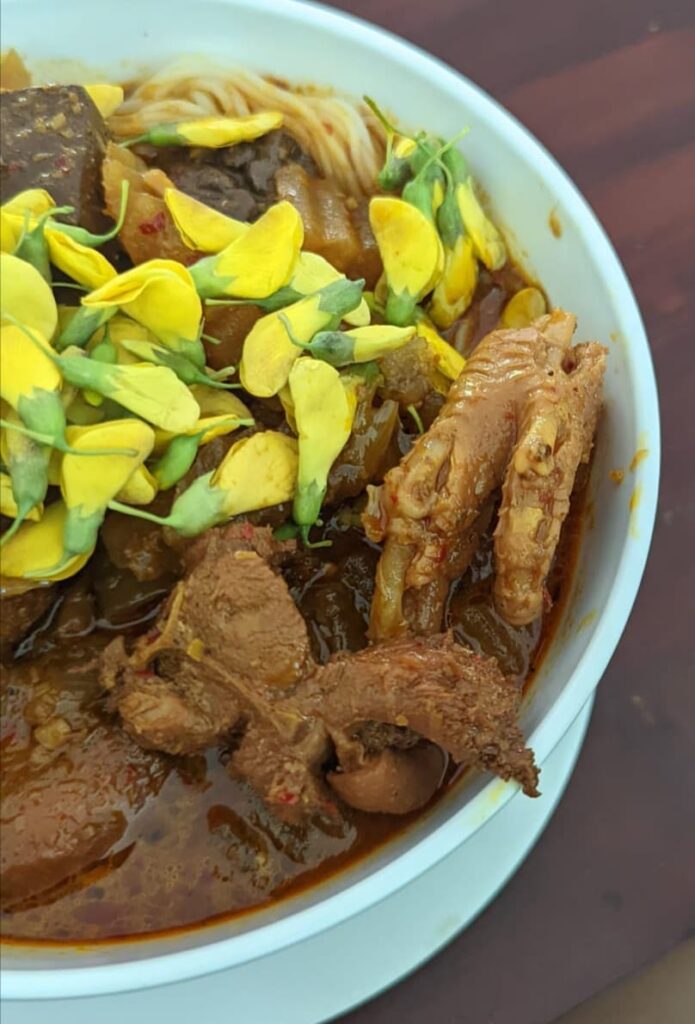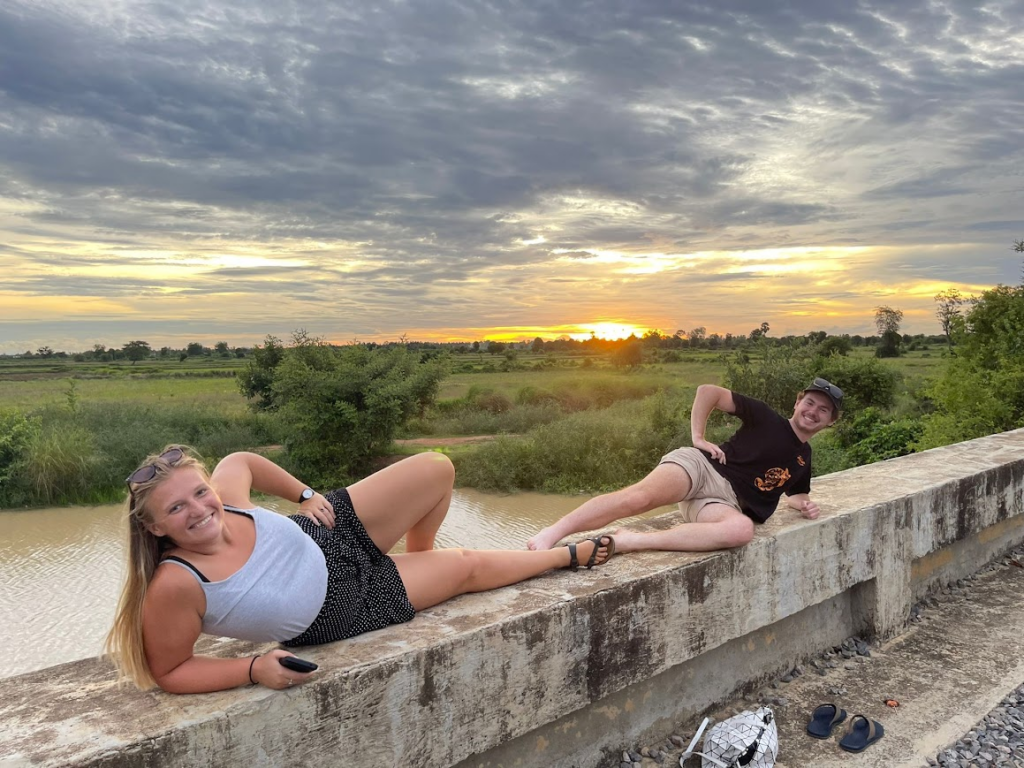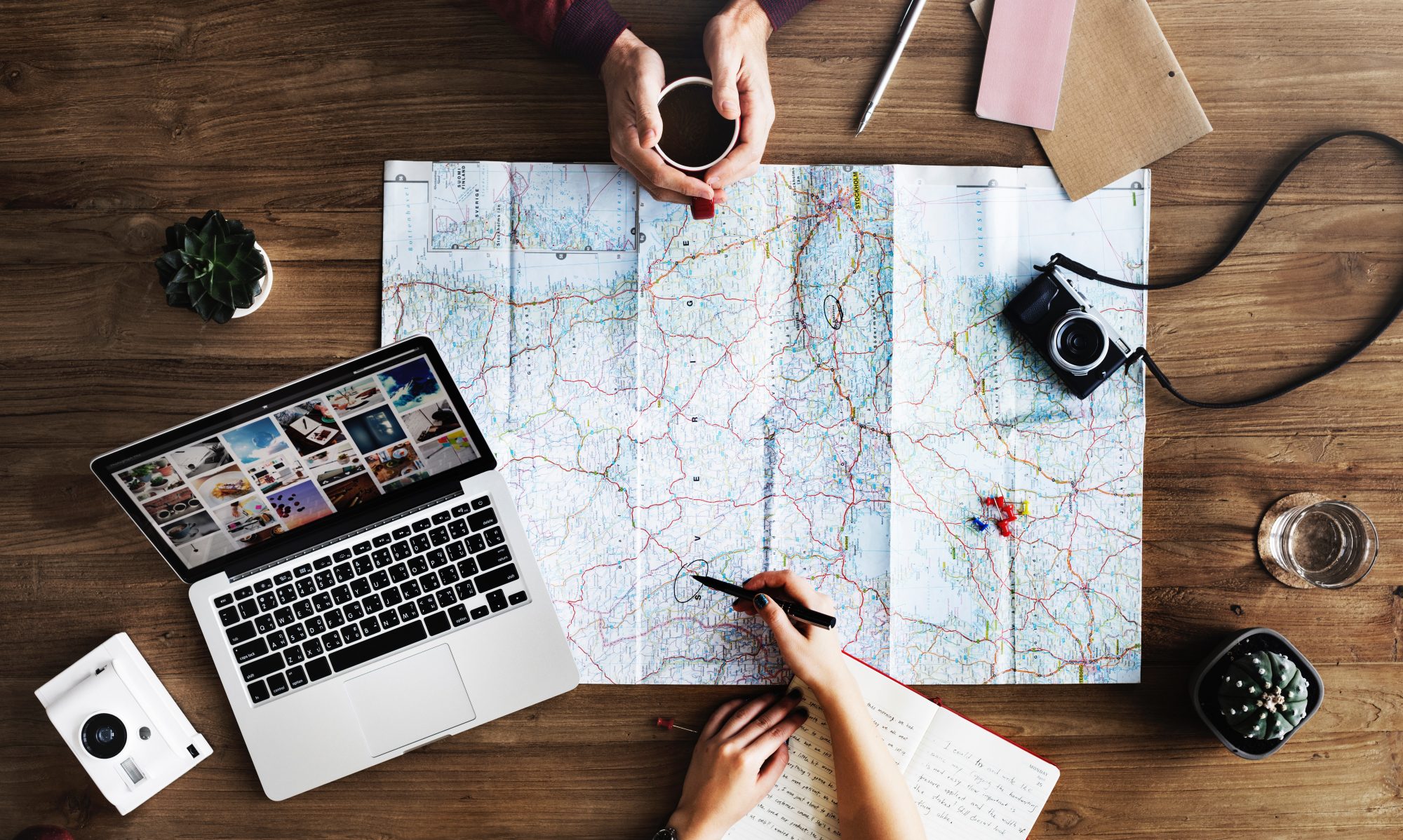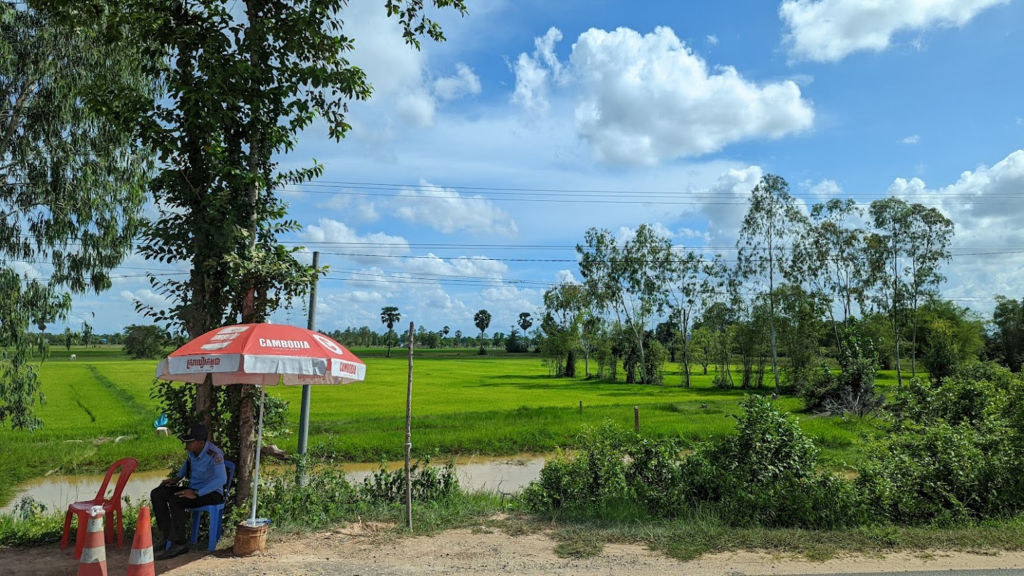The bus ride from Phnom Penh to Batambang was a long one taking 7 hours in total. We did have a stop at a service station for lunch, I ordered chicken noodles which seemed to contain every part of the chicken except the bits we eat in the UK. No leg or breast meat but plenty of internal organs, the chicken’s feet and even cubes of chicken blood sausage. I gave a few of the more edible looking bits a try but mostly concentrated on the noodles! Most of the group preferred to go hungry. Even the vegetarians were left disappointed after finding the only vegetarian meal was just a plate of morning glory (A kind of spinach eaten for breakfast here). You can imagine the jokes that provided us with…

Our next stop was one where we didn’t risk food poisoning at least, it was a small family run pottery. And when I say family run I mean it, everyone was involved from the grandmother making pots to small children digging the clay from the ground and a young teen adding insulation and concrete bases to some basic cooking ovens being made. It was a quite interesting and enjoyable stop, if you ignore the child labour! But the kids were playing in the clay and fascinated to see us.

Initially we weren’t sure what they were making. It was basically an insulated container with one open side and prongs on top. Used to light a fire in the bottom, once the container heats up you can put a pot or wok to cook with. Our guide Sarath was mind blown that we had never seen one before as it’s such a basic household item here and how everyone cooks. He couldn’t believe that we all had ‘fancy hotel ovens’ at home.

The grandmother also showed us how she makes the pots from the clay. Potter’s wheels are not needed here, instead she just walks backwards in circles around the clay. When someone asked why she didn’t buy a wheel she was mystified why anyone would need one. Getting me to walk around backwards to demonstrate how easy it was.

After a few more hours we reached Battambang. A few of us decided to do the optional extra of riding the ‘bamboo train’. The ‘train’ is an invention by the locals to use an old railway track to move things between villages. Two axles with rollers the right distance apart are put on the track and then a rigid bamboo floor mat placed over them to sit. Originally a hand pumped leaver was used to move the contraption along, but nowadays they use a motor.

It was great fun, we were wizzing along the track. At one point we met some locals coming the other way and with a huff our driver got us all off, took the contraption apart, let the other train pass and put it all together again.
Eventually we reached a small bridge over the river and the drivers stopped to let us get off and watch the sunset. Apparently we were a little too keen, we all got off at once leaving the driver and engine on one side of the axle and causing the train to tip up.

Once there, there wasn’t much to do except have a photo shoot, so obviously we did and milked it! We also saw some monks having a photo shoot too, so we weren’t the only ones!


The next morning we went on a bicycle tour. Batambang is known as the rice bowl of Cambodia, so we got to see everything and anything made out of rice. We had a joke on the trip that if you were ever unsure of what you were eating it was probably rice of some kind. This trip definitely proved that!
First we saw the process of making rice paper, the super thin paper like wraps used in fresh spring rolls. I even got to have a go at rolling one out to dry in the heat.

Next on the tour was a house making sweets out of, you guessed it, rice. They were nice enough but not really my thing, its like a ground down and condensed version of rice pudding I guess.

After that was a brewery making rice wine. Sadly we didnt get to try any, but that may have been for the best, the whole opperation had a very moon-shine feel about it and I actually enjoy not being blind…

After this we went to see a traditional Cambodian house that had been in a family for 7 generations and had a lot of antiques, it was interesting to look around and also super cool to see how the building let in a breeze and kept cool. They also showed us how they grind up rice as no stop could be complete without some rice facts.


The one stop of the day that didnt invlove rice was the Prahok making tour, I ended up being the only one brave enough (also know as smell deficient enough) to take part in this stop. I was taken around a fish processing area where a speciality of Prahok (fermented fish paste) was made. There were a lot of big open barrels of fermenting fish. I wasnt quite brave enough to try any but it was interesting to see the process.
On our way back from the tour we got caught in a large down poor of rain, so heavy we couldnt ride our bikes in it, some kind shopkeepers let us stand away from the rain in their large open shop, we were stuck there for about an hour but it ended up being one of our best stops. An impromptu meet and greet with two locals, translated by our guide they were asking us about where we came from and how things worked in our countries. They found it funny that white people are all obsessed with cheese, something not really found in cambodia, infact they dont really have a popular word for it instead calling it ‘American Milk’. That got us on to the subject of hotdogs, here what they’re called roughly translates to ‘American Dicks’ this let on to more dick related conversations including the fact that cambodians use ox cock as slang for aubergine but they also eat ox cock which lead to some hillarious pranks on some travelers. Eventually the rain cleared and we left our new friends behind and cycled back to the hotel.
Day two bike tour rice paper, rice wine, fish factory, rice cake, ride in the rain, ox cock. Evening saw bats walked up to Budda, tried crickets silk worm and raw meat.
In the evening we got to experience the famous bat migration at Phnom Sampov. We parked up and walked down what felt like an A road, the further we walked the bussier it got, there were food stalls and tables and chairs everywhere all directly under a huge cave, it had a real festival vibe, even though this happened daily.
The migration doesnt happen until 5pm so we decided to expolore the area while we waited. We climbed up the giant budda to get a view of the area and then after that hungry work we went of to try some local speciality foods.

A few of of us were brave enough to try crickets, silk worms and raw beef, (not sure why I was so keen to risk food poisining this close to the end of the trip, but luckily it was fine!) but we werent brave enough to try the raw chicken fetus even though our guide indulged and kept asking if we wanted some…




After our snacks, we sat down and waited for 5pm, when the migration would begin. First it was just a trickel of bats that came out of the cave, but then there were more and more until a thick stream of them could be seen coming out of the cave and snaking across the sky, there were thousands! The photos really dont capture how many there were and they kept coming at that volume for about 45 minutes.


We stayed until dark and then headed back to the hotel to rest after our jam packed day. The next few days will be just as busy, will write about them soon.
Love Alice x
















